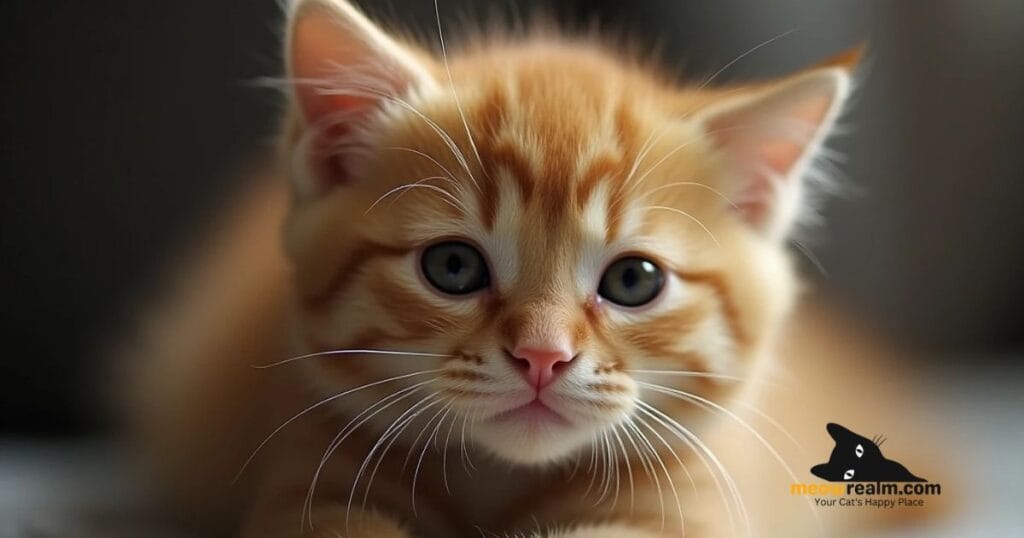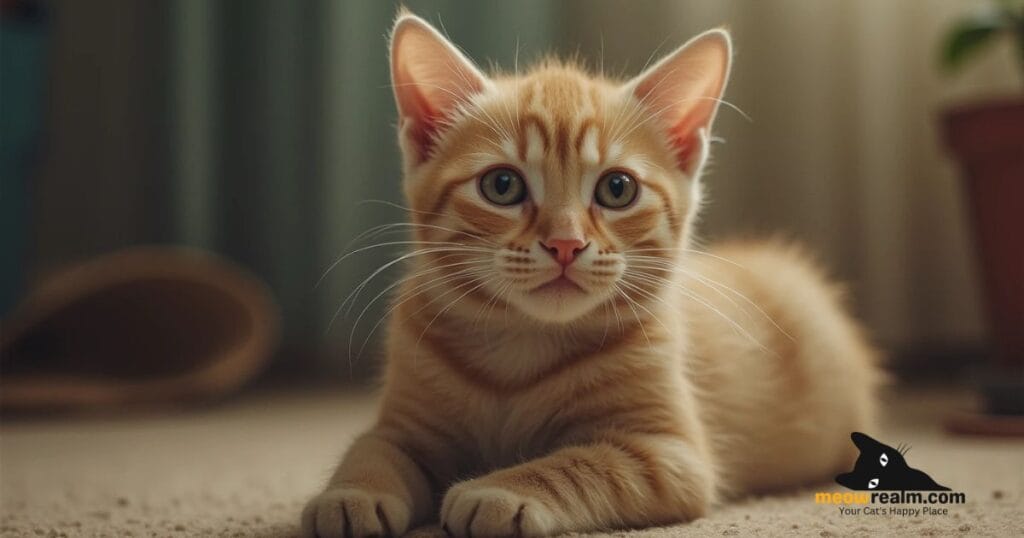What Meow Might Mean NYT – If you’re a cat lover, you’ve probably heard your furry friend’s distinctive “meow” hundreds, if not thousands, of times. But how often have you paused to wonder what your cat is really trying to say? From a quick “mew” when you walk through the door to a loud demand near the food bowl, every meow holds a different meaning. Understanding your cat’s language can deepen the bond you share, improve your cat’s quality of life, and even help you spot any potential health issues early on.
The New York Times recently explored the mysteries of cat communication, helping cat owners decode the complex language of the feline meow. This article will guide you through the basics of cat communication, reveal the meanings behind common meows, and give you insights on how to better understand your cat’s needs and feelings.
Table of Contents

The Basics of Cat Communication – Meow Might Mean NYT
Understanding cat communication is the first step to building a stronger relationship with your pet. Cats primarily use body language to communicate with other cats, but when it comes to humans, they rely more on vocalizations like meows, chirps, and purrs. Unlike wild cats, which rarely meow, domesticated cats have developed a unique “language” to interact with humans.
What is a Meow?
A “meow” is a vocalization that cats use almost exclusively to communicate with humans. This sound can vary in tone, pitch, and duration, and each type of meow has a distinct meaning depending on the situation. Interestingly, meowing is a learned behavior that cats adopt to get a response from their human companions.
Why Cats Meow
The primary reasons cats meow can range from expressing a need or desire, like hunger or wanting to go outside, to showing affection or even signaling distress. This vocal behavior evolved due to domestication, as cats recognized that humans respond more quickly to vocal cues than to other forms of feline communication.
Understanding these meows can make a world of difference. Once you learn to recognize what your cat is trying to tell you, you’ll be able to respond more effectively, strengthening the bond you share.
Common Types of Meows and Their Meanings – Meow Might Mean NYT
Every cat has a range of vocalizations, and while some may be more talkative than others, every meow conveys specific information. Here are some common types of meows and what they might mean:
Short, Quick Meows: “Hello” or Attention-Seeking
Short meows are often used as a greeting, much like a quick “hello.” If your cat gives you a soft, short meow when you come home or enter a room, it’s likely just acknowledging you and saying a friendly hello.
Prolonged or Repeated Meows: Requests or Demands
A longer or more insistent meow often signals a demand. If your cat is meowing repeatedly, it may be requesting something specific, like food, water, or playtime. For example, prolonged meows near the food bowl are a clear indicator that your cat is hungry.
Chirping or Trilling
Chirping is a sound that cats make when they are excited, often when they spot birds or other prey outside the window. It’s believed to be an instinctual sound cats use when hunting, so when they chirp at you, they might be trying to engage you in play.
Yowling or Growling
Yowling is a loud, often alarming sound that cats make to signal distress, frustration, or even a need for medical attention. If your cat starts yowling or growling without a clear reason, it may be best to consult a veterinarian to rule out any health issues.
Each of these meows serves a different purpose, and learning to recognize them can help you better meet your cat’s needs.

Contextual Clues: When and Where Cats Meow -Meow Might Mean NYT
The context of a meow can tell you just as much as the sound itself. Understanding where and when your cat is meowing can provide clues to its meaning.
Environmental Triggers
Cats often meow in response to specific environmental factors. For instance, if they meow when you’re preparing food, they’re likely hungry. On the other hand, a meow at the door may indicate they want to go outside.
Tone, Frequency, and Body Language
Cats communicate a lot with their bodies, so watching for other cues—such as tail position, ear direction, and eye contact—can provide additional context. A relaxed tail and soft meow usually mean your cat is content, while a tense posture paired with a loud meow may signal stress or fear.
Influence of Age and Breed on Meowing Patterns
Some breeds are known for being more vocal than others, such as Siamese and Oriental breeds, which are often talkative and expressive. Additionally, a cat’s age can influence how frequently it meows; kittens and elderly cats, for example, tend to vocalize more often, each for their own reasons.
The Health Side of Meowing
Meowing can also be an important indicator of health. If your cat’s meows have changed in frequency or tone, it could signal a health issue that requires attention.
Health-Related Meows
Sudden or excessive meowing may be linked to conditions such as hyperthyroidism, kidney disease, or cognitive dysfunction syndrome in older cats. Observing these vocal changes and consulting a veterinarian can ensure your cat receives the care it needs.
When to See a Vet
If your cat starts yowling without a clear reason, or if it seems in pain, distressed, or disoriented, it’s time to see a vet. Changes in vocalization can be early signs of illness, and addressing them promptly can make a significant difference in treatment outcomes.
Pros and Cons of a Talkative Cat -Meow Might Mean NYT

Pros
- Enhanced Bonding: A vocal cat can help you better understand its needs and strengthen your relationship.
- Clear Communication: Talkative cats often make it easy to understand what they want, reducing guesswork.
Cons
- Noise Disturbance: Vocal cats can be disruptive, especially at night, which may affect your sleep and quiet time.
- Potential Stress Indicator: Excessive meowing can sometimes signal stress or health issues, which may require intervention.
Tips for Managing and Interpreting Cat Meows -Meow Might Mean NYT
Learning to manage and interpret your cat’s meows can enhance your bond and make daily interactions smoother.
Establishing Routines
Cats are creatures of habit, and a consistent feeding and activity schedule can help reduce unnecessary meowing. By establishing a routine, you can help your cat feel more secure and less likely to meow for attention outside of its usual times.
Training Techniques for Excessive Meowing
If your cat meows excessively for attention or food, try using positive reinforcement to encourage quieter behavior. Rewarding your cat when it’s quiet and ignoring meows for non-essential reasons can gradually reduce the habit.
Building a Healthy, Communicative Relationship
Take the time to observe and listen to your cat’s meows. Responding to its vocalizations will show your cat that you’re attentive, helping build a communicative and trusting relationship.
Frequently Asked Questions (FAQ) Meow Might Mean NYT
- Why does my cat meow so much?
Common reasons include hunger, attention-seeking, or health-related concerns. Observing the context can help pinpoint the reason. - How do I know if my cat’s meow means something is wrong?
Sudden or unusual meows, combined with other signs of distress, often require a vet visit to rule out health issues. - Are some breeds more vocal than others?
Yes, certain breeds, like Siamese and Oriental Shorthairs, are known for their talkative nature. - Is it possible to train my cat to stop meowing at night?
Setting routines and using positive reinforcement can help manage nighttime meowing.
Conclusion/ Meow Might Mean NYT
Understanding your cat’s meows can enrich your bond and improve your cat’s well-being. By tuning into the subtle cues your cat provides, you’ll be able to respond to its needs more accurately, creating a fulfilling relationship for both you and your feline friend.
For more insights on cat behavior, tips on caring for your pet, and community advice, visit MeowRealm.com. Share this guide with fellow cat lovers to help everyone better understand their furry friends.

